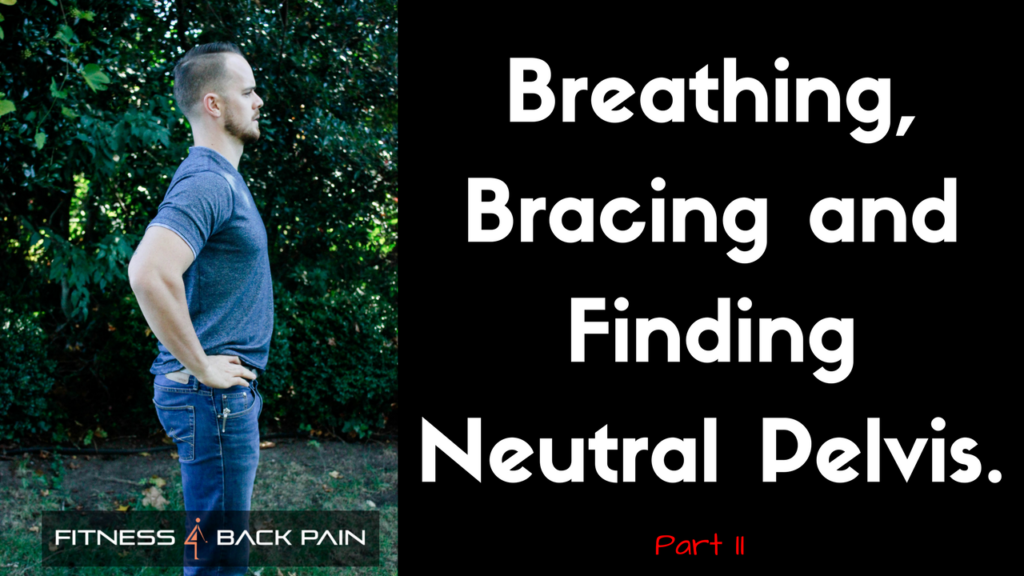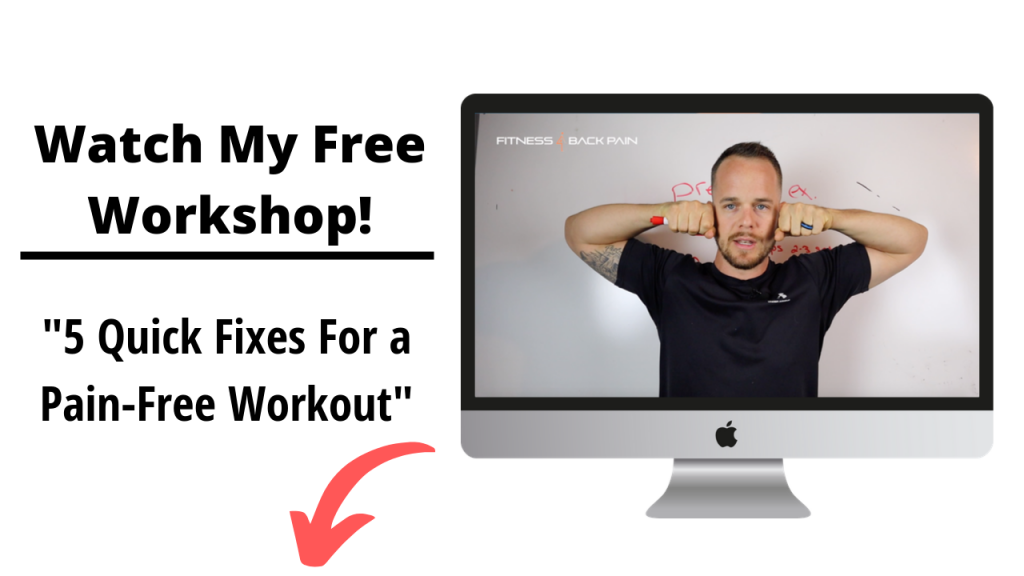
When it comes to chronic lower back pain, breathing, bracing and being able to find YOUR neutral pelvis will always have a HUGE impact on how you recover. The medical industry over complicates and treats back pain as if it’s cancer. They cut away at your discs and fuse the bones together as if the fact that your bones move freely and discs respond to abuse is a bad thing. The “medical professionals” are only here to do one thing and that is to treat the damage, not the cause. Getting long-term relief from chronic lower back pain can be frustrating if you’re trying to do it on your own. You have to know where to start and in what direction to go.
In today’s post (Part II of this series) we are continuing what will go down in history as the number one source for ANYONE looking to take the right steps towards finding freedom from chronic low back pain. Specifically, we will be diving into correcting the way you’re breathing, bracing and locking in a neutral pelvis and how these three being happily married is a necessity for beating chronic low back pain.
Last week we kicked off this series with learning how to shut off your lower back when you’re on your feet standing around or sitting at your desk. We also talk about how to improve something we do every single day that is messing us up. If you have not gotten a hold of that post yet you need to start there! Check this out and I will meet you back here when you’re done!
Check this out and I will meet you back here when you’re done!
Let’s get into PART II of this series!
Breathing, Bracing and Learning to Find Your Neutral Pelvis (in 4 important positions)
Remember, as these posts are published the key is tuning your progression according to how your body is responding. You will not progress on a week to week basis so give yourself time and trust the process.
I was talking to a 20+ year veteran in the massage therapist industry the other day and we were chatting about core stability (breathing correctly and bracing the core to be specific). Mind you this guy is probably in his 60’s and some of his “skills” are a little dated but the conversation was started from him coming to me with questions about his Physical Therapists unnatural focus on…
brace yourself…
Mindfulness with the way he uses his body. Yup, that’s right. It sounds like Pete (his name isn’t Pete but for the sake of privacy we will call him Pete) has found a pretty decent PT. Now, when I say mindfulness I’m not talking about meditation or anything like that. She is actually teaching Pete about being mindful with the way he is bracing his abdominals and breathing at the same time. I was blown away to hear of someone on that level doing something a little less textbook. Pete was super stressed because all the years he has been in the “Health and Fitness” industry as a body worker he had never really focused on that. He is relatively pain-free at the moment but working with him on his bracing and breathing cueing had him acting like he was doomed to a life of misery unless it caught on.
The word I like to use is a lack coordination when it comes to knowing how to master the use of the human body as one unit. What I mean by that is knowing how to tune your brace for the activity you’re doing, successfully breathing diaphragmatically all at the same time while you’re moving your body through whatever demand is needed at the time. Now, this is not the end all be all of long-term relief but it’s the next piece of the puzzle you are going to need to learn.
Bracing and Breathing
Abdominal bracing while breathing correctly at the same time is like a marriage. If you don’t take the time to nurture the relationship and invest in improving it, it’s going to suffer. If it’s never addressed you have two parts to what could be an awesome team but instead, they are operating without balance or coordination.
You have to develop this relationship to make it work.
The majority of humans breathe in and out from their chest. Due to the way we have evolved, daily stress and poor habits we have lost connection with utilizing our respiratory system to it’s full capability. Fixing this is very simple it just takes time and persistence towards a specific goal. Once the breathing is under control we add in abdominal bracing to take this new habit to the next level. The power our body uses to move begins at the core and the ability to maintain these movements and static positions is affected by the way we breathe.
Are you seeing the connection?
To make this a little easier check out the video I created below. If you’re looking for the best way to approach learning to breathe and brace at the same time you don’t want to skip over it!
To dive even more into this specific topic there is a pretty good article over at breakingmuscle.com talking about implementing breathing and bracing with exercise. You can check it out here
Finding your neutral pelvis
To get the most out of this I put together an in-depth mini-course (video) breaking down how to find your neutral pelvis when standing, sitting, on all 4’s and on your back. For some, this will be surprisingly hard as they may find themselves making all the pelvic movements with the entire lumbar region. For others, this will be super easy. No matter where you are, the important thing to remember is that every movement and position you take on during the day needs to consists of locking in a neutral pelvis, bracing when necessary and breathing the RIGHT way.
Check out the video below!
For those of you who have pain in both end ranges of motion with APT (anterior pelvic tilt) and PPT (posterior pelvic tilt). You’re looking to find the position of the pelvis that brings the least amount of discomfort. When you find this, this typically will be close to neutral. The goal here is not to be anal about the exact position. What I want you to do is get used to what it feels like in both end ranges of motion and everything in between. EVERYONE has a sweet spot between APT and PPT that they can call home.
Quick tip: Practice this in the mirror with your eyes closed. Get into what you think is “neutral” and then open your eyes? How does it look? Do you look and feel comfortable? Do you feel balanced?
Nutritiousmovement.com has a pretty good follow up to this video that talks about getting to know what a neutral position is for you. You can check it out here
Another great practice to go along with working around a neutral pelvis is knowing how to stack the body well. The only way to get good at this is to practice.
So we have covered finding your neutral pelvis and knowing how to lock this position in with the proper abdominal brace and breathing. Now let’s practice.
Homework For Week 2 (Part II)
– Continue implementing the first week’s lesson into your every day. Practice it so much that it becomes second nature. This stuff WILL become a habit if you become obsessed with these changes.
– Resetting to find neutral: Reset yourself 25 x a day or more.
– Breathing and Bracing: After finding neutral, brace and go through 5-6 breathing cycles with that static brace. While walking, consciously engage your core while breathing into your trunk.
Boom, week two is done. There is always room to dive even deeper into this stuff but I want you to be able to digest these topics easily and take immediate action. Now get off your butt and get to work!
I need your help! I passionately want to reach people just like you and me who are struggling to find solutions to their back pain and don’t want to go the traditional treatment route. I need your support! If you found this article helpful in any way please share it to your social media platforms or with a specific friend in mind. There is so much crap on the internet that back pain sufferers are consuming and implementing every day. Help me make a positive change! Share the wealth! Thank you!
Thanks, guys!
William
p.s If you missed part 1 of this series, you can check it out here


2 thoughts on “3 Tips: Breathing, Bracing and Finding Your Neutral Pelvis (for chronic low back pain)”
Comments are closed.